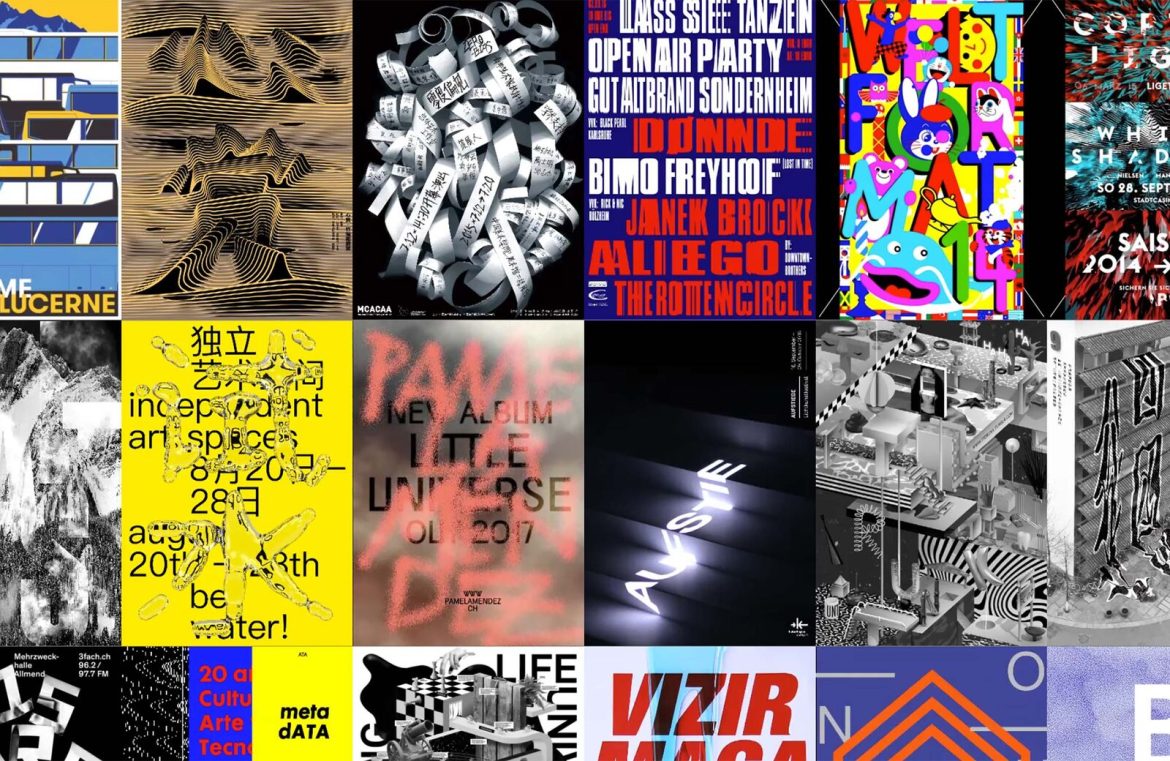603
Design fashions come and go without necessarily advancing the craft or enhancing the experience for users. Across numerous creative realms, such as clothing design to building design, the temporary prevailing styles and directions signal the industry’s pulse at a given moment. These fashions are often a pendulum swing away from a past aesthetic, shifting from intricacy to simplicity, or from bold hues to muted tones. Inherently transient, trends are bound to resurface over time in some shape or form across creative sectors. [pullquote]Thus, the pivotal question emerges: what’s the rationale behind these trends?[/pullquote] Within the creative domains, transformative growth is capped: Architecture is fettered by laws and material advancements; Website design is confined by internet capabilities and the manner it’s accessed. These elements evolve gradually, paving the way for novel design methods. Yet, for the interim, fields like website design have altered little for the average user. Despite the ability to browse sites on smartphones and use cutting-edge tech for intricate layouts, the stylistic themes we apply could have been implemented years ago. Even the more intricate visual effects were done over ten years prior—though by using Flash. 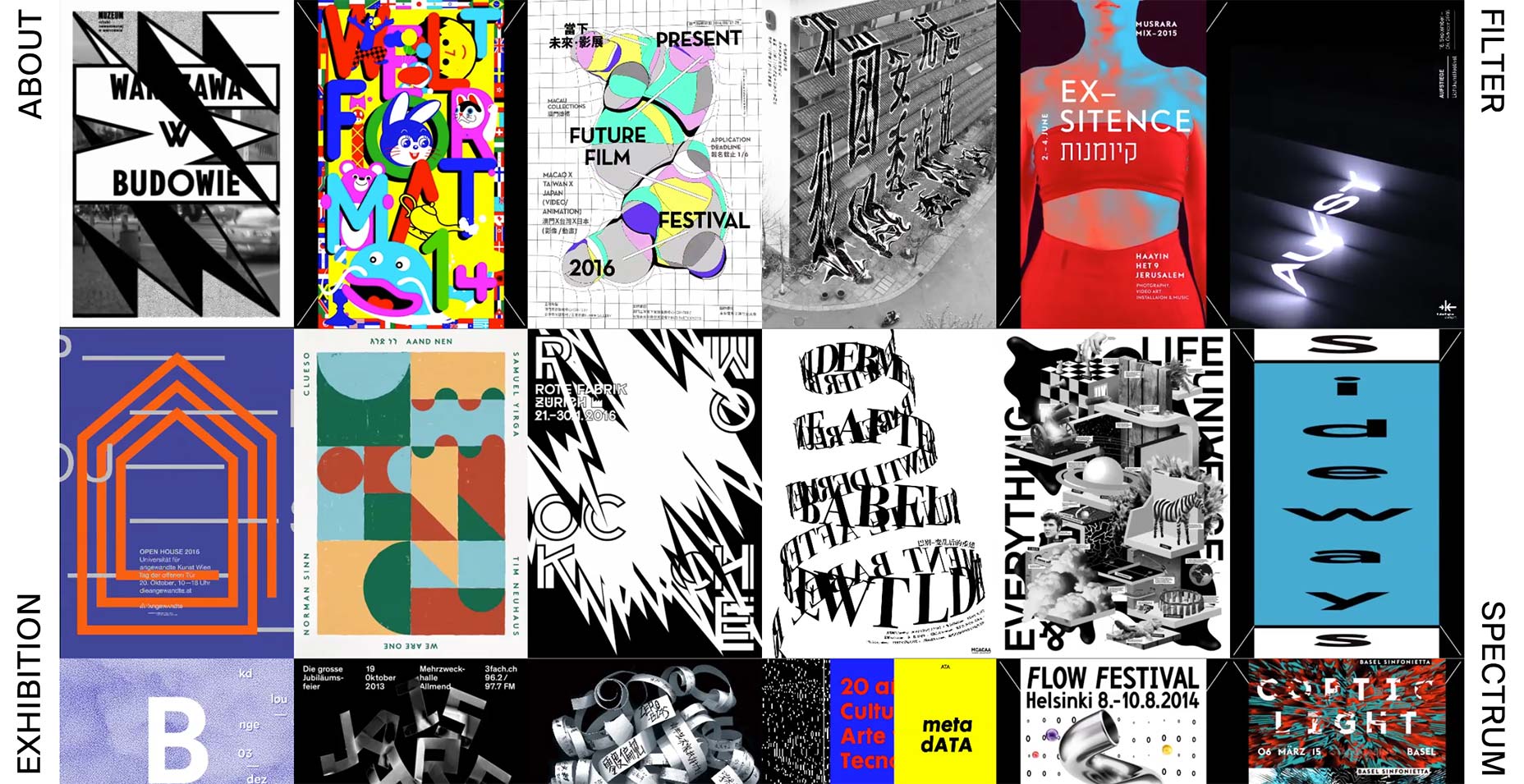 Consequently, the core question persists: why do trends exist? Their purpose isn’t for propelling an industry nor for elevating the end-product for users, be it in apparel or web design. The function of trends lies in sustaining visual intrigue, for consumers and creators alike. Taking web design as an exemplar, we notice that we’ve systematically stripped sites of their elaborate features. Though presently engaging due to its fashionableness, this does minimal to enhance user interaction. Consider the website design for Abduzeedo in 2010, as seen through the Wayback Machine.
Consequently, the core question persists: why do trends exist? Their purpose isn’t for propelling an industry nor for elevating the end-product for users, be it in apparel or web design. The function of trends lies in sustaining visual intrigue, for consumers and creators alike. Taking web design as an exemplar, we notice that we’ve systematically stripped sites of their elaborate features. Though presently engaging due to its fashionableness, this does minimal to enhance user interaction. Consider the website design for Abduzeedo in 2010, as seen through the Wayback Machine. 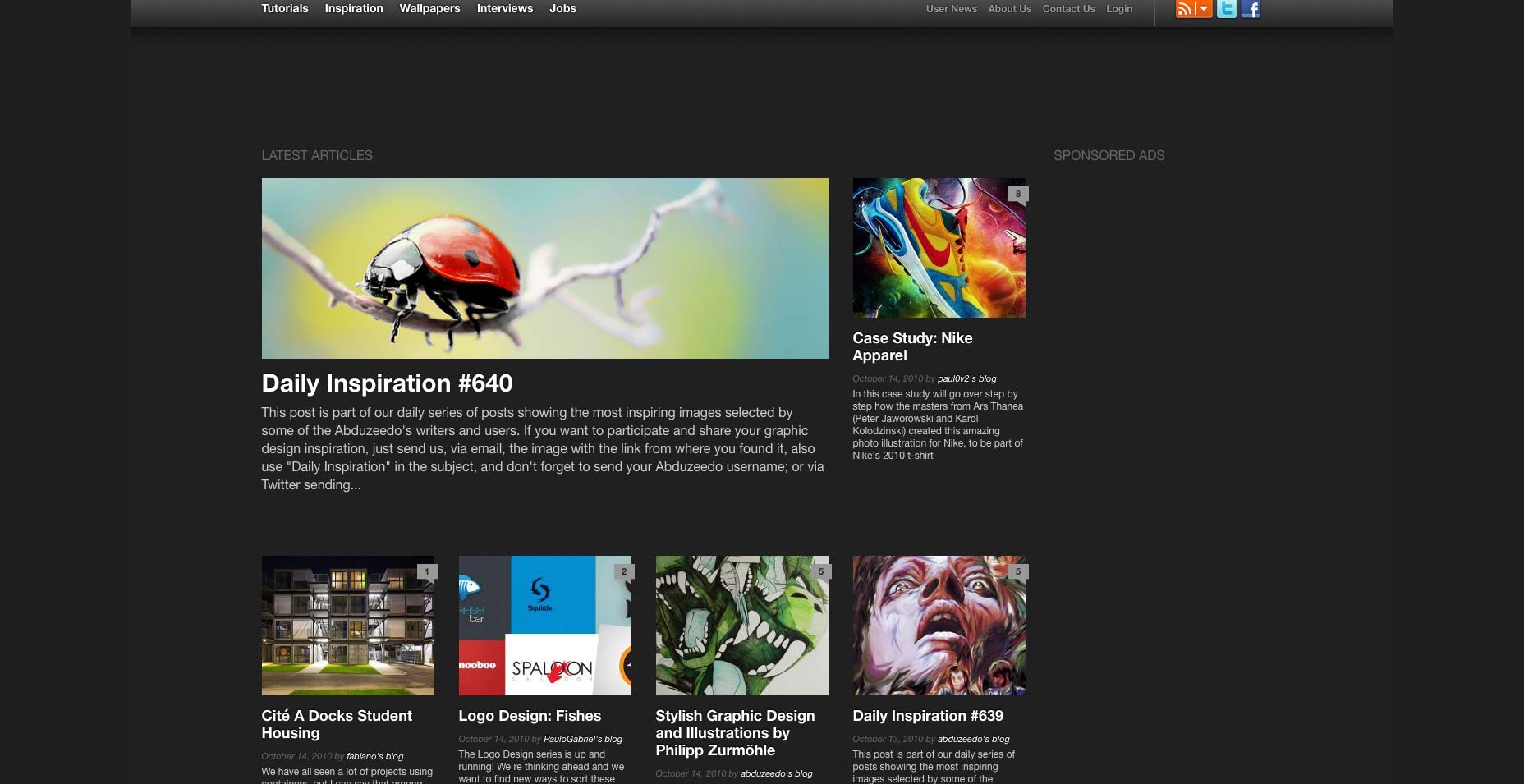 Contrast this with Abduzeedo in 2018. It adopts several prevailing styles; shedding complex design elements like gradients and swapping critical features for more obscure alternatives.
Contrast this with Abduzeedo in 2018. It adopts several prevailing styles; shedding complex design elements like gradients and swapping critical features for more obscure alternatives. 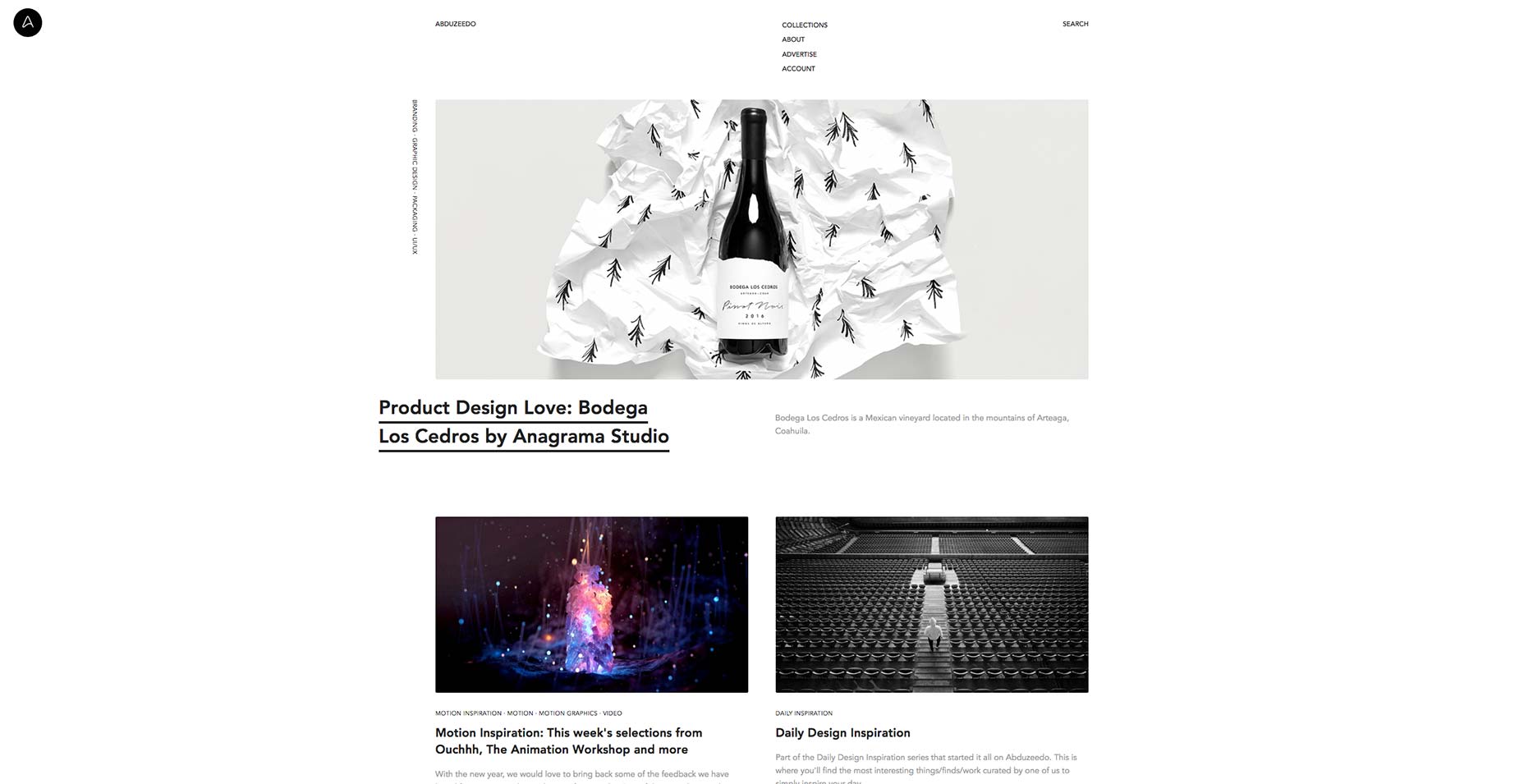 Is this shift focused on usability, or merely being current? It becomes more laborious to browse recent articles, there’s confusion in content structure and a lack of the earlier version’s vivid contrasts and visual flare. Abduzeedo’s minimalist approach is not unique; similar shifts are widespread among websites during this era. But what of maintaining the status quo? As for myself and perhaps other long-time followers of Abduzeedo, stellar design withstands the test of rapid industry change. Some sites have held onto their initial designs over extensive periods, having forged a design vernacular that aligns with user needs. These sites ignore the wax and wane of trends, standing solid with their design convictions. A prime case is The Drudge Report.
Is this shift focused on usability, or merely being current? It becomes more laborious to browse recent articles, there’s confusion in content structure and a lack of the earlier version’s vivid contrasts and visual flare. Abduzeedo’s minimalist approach is not unique; similar shifts are widespread among websites during this era. But what of maintaining the status quo? As for myself and perhaps other long-time followers of Abduzeedo, stellar design withstands the test of rapid industry change. Some sites have held onto their initial designs over extensive periods, having forged a design vernacular that aligns with user needs. These sites ignore the wax and wane of trends, standing solid with their design convictions. A prime case is The Drudge Report. 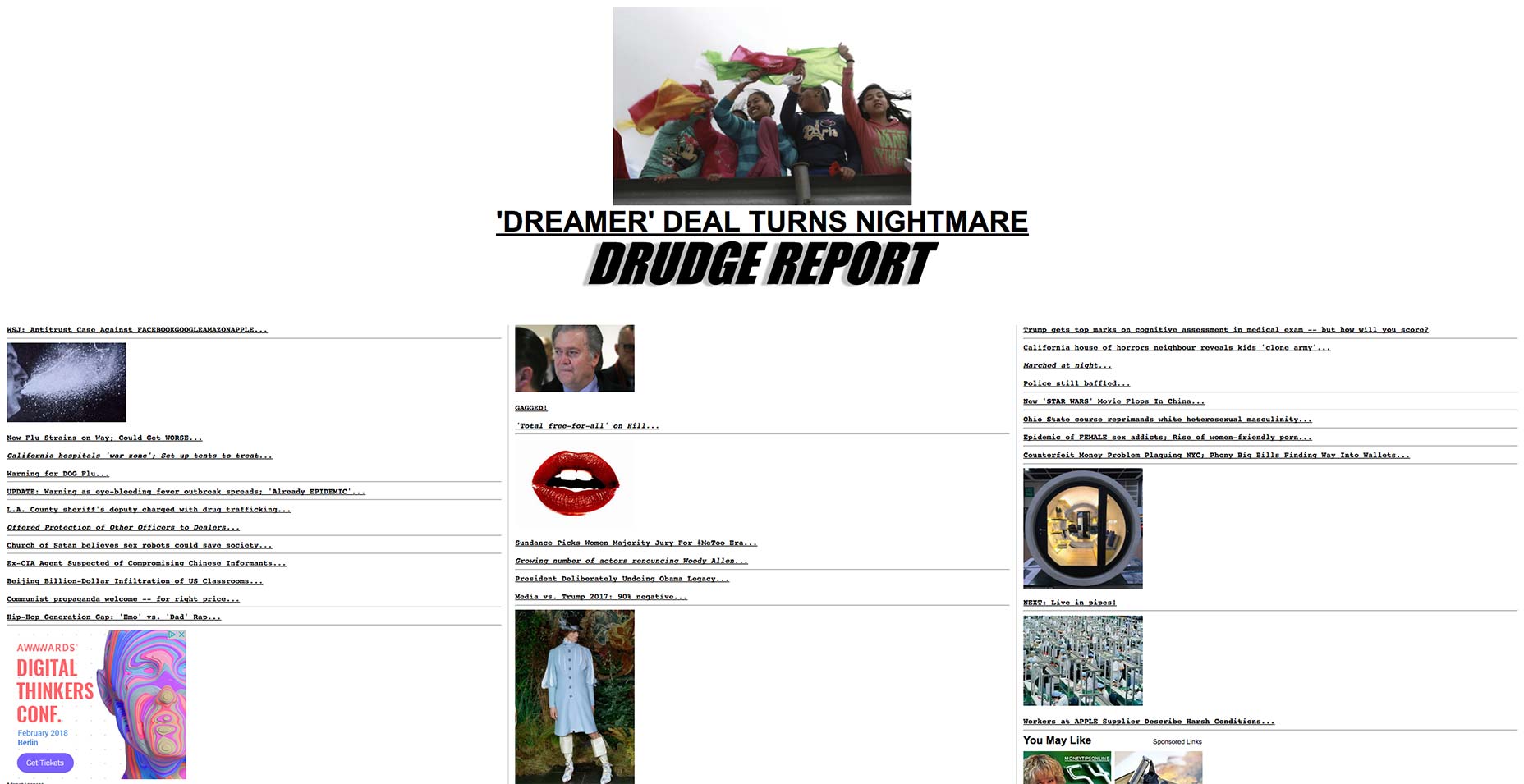 It steers clear of minimalist or brutalist style fads. Its appearance has remained consistent for the majority of two decades. Its audience appreciates the design’s simplicity and steadiness. In a world of news sites clamoring for your attention with incessant updates, The Drudge Report has retreated from the fray, maintaining its foundational intent. [pullquote]A great deal of the trend cycle is attributable to ennui[/pullquote] Certain outliers during this timeframe have influenced design principles, such as the ongoing refinement of design systems like Material Design, which progresses a contemporary and intuitive design lexicon for collective adoption and benefit. It’s evident across Google’s range of products, heightening user experiences through standardized user interface elements and uniformity. For the most part, though, design fashions revolve around unendingly tweaking styles to present fresh, distinctive offerings to users, patrons, clientele, and designers alike. Often it’s about countering stagnation, affecting not just buyers but creators too. Imagine a world where urban skylines, tech devices, websites, applications, and fashion were indistinguishable, devoid of any flair or sentiment. Additionally, the market-driven economy thrives on companies continuously unveiling new items and designs, despite the merit of existing ones. Designers must ponder whether trends should take precedence, or if user experience ought to dictate style and direction. This balance heavily leans on sub-industry specifics and whether a design is visually driven or user-focused. Elements like logo creation or poster design can generously embrace trends. Digital product design should always prioritize user experience over the allure of fads. Trends, in many respects, ought to be secondary in these circumstances and have negligible impact on design choices.
It steers clear of minimalist or brutalist style fads. Its appearance has remained consistent for the majority of two decades. Its audience appreciates the design’s simplicity and steadiness. In a world of news sites clamoring for your attention with incessant updates, The Drudge Report has retreated from the fray, maintaining its foundational intent. [pullquote]A great deal of the trend cycle is attributable to ennui[/pullquote] Certain outliers during this timeframe have influenced design principles, such as the ongoing refinement of design systems like Material Design, which progresses a contemporary and intuitive design lexicon for collective adoption and benefit. It’s evident across Google’s range of products, heightening user experiences through standardized user interface elements and uniformity. For the most part, though, design fashions revolve around unendingly tweaking styles to present fresh, distinctive offerings to users, patrons, clientele, and designers alike. Often it’s about countering stagnation, affecting not just buyers but creators too. Imagine a world where urban skylines, tech devices, websites, applications, and fashion were indistinguishable, devoid of any flair or sentiment. Additionally, the market-driven economy thrives on companies continuously unveiling new items and designs, despite the merit of existing ones. Designers must ponder whether trends should take precedence, or if user experience ought to dictate style and direction. This balance heavily leans on sub-industry specifics and whether a design is visually driven or user-focused. Elements like logo creation or poster design can generously embrace trends. Digital product design should always prioritize user experience over the allure of fads. Trends, in many respects, ought to be secondary in these circumstances and have negligible impact on design choices.
 Consequently, the core question persists: why do trends exist? Their purpose isn’t for propelling an industry nor for elevating the end-product for users, be it in apparel or web design. The function of trends lies in sustaining visual intrigue, for consumers and creators alike. Taking web design as an exemplar, we notice that we’ve systematically stripped sites of their elaborate features. Though presently engaging due to its fashionableness, this does minimal to enhance user interaction. Consider the website design for Abduzeedo in 2010, as seen through the Wayback Machine.
Consequently, the core question persists: why do trends exist? Their purpose isn’t for propelling an industry nor for elevating the end-product for users, be it in apparel or web design. The function of trends lies in sustaining visual intrigue, for consumers and creators alike. Taking web design as an exemplar, we notice that we’ve systematically stripped sites of their elaborate features. Though presently engaging due to its fashionableness, this does minimal to enhance user interaction. Consider the website design for Abduzeedo in 2010, as seen through the Wayback Machine.  Contrast this with Abduzeedo in 2018. It adopts several prevailing styles; shedding complex design elements like gradients and swapping critical features for more obscure alternatives.
Contrast this with Abduzeedo in 2018. It adopts several prevailing styles; shedding complex design elements like gradients and swapping critical features for more obscure alternatives.  Is this shift focused on usability, or merely being current? It becomes more laborious to browse recent articles, there’s confusion in content structure and a lack of the earlier version’s vivid contrasts and visual flare. Abduzeedo’s minimalist approach is not unique; similar shifts are widespread among websites during this era. But what of maintaining the status quo? As for myself and perhaps other long-time followers of Abduzeedo, stellar design withstands the test of rapid industry change. Some sites have held onto their initial designs over extensive periods, having forged a design vernacular that aligns with user needs. These sites ignore the wax and wane of trends, standing solid with their design convictions. A prime case is The Drudge Report.
Is this shift focused on usability, or merely being current? It becomes more laborious to browse recent articles, there’s confusion in content structure and a lack of the earlier version’s vivid contrasts and visual flare. Abduzeedo’s minimalist approach is not unique; similar shifts are widespread among websites during this era. But what of maintaining the status quo? As for myself and perhaps other long-time followers of Abduzeedo, stellar design withstands the test of rapid industry change. Some sites have held onto their initial designs over extensive periods, having forged a design vernacular that aligns with user needs. These sites ignore the wax and wane of trends, standing solid with their design convictions. A prime case is The Drudge Report.  It steers clear of minimalist or brutalist style fads. Its appearance has remained consistent for the majority of two decades. Its audience appreciates the design’s simplicity and steadiness. In a world of news sites clamoring for your attention with incessant updates, The Drudge Report has retreated from the fray, maintaining its foundational intent. [pullquote]A great deal of the trend cycle is attributable to ennui[/pullquote] Certain outliers during this timeframe have influenced design principles, such as the ongoing refinement of design systems like Material Design, which progresses a contemporary and intuitive design lexicon for collective adoption and benefit. It’s evident across Google’s range of products, heightening user experiences through standardized user interface elements and uniformity. For the most part, though, design fashions revolve around unendingly tweaking styles to present fresh, distinctive offerings to users, patrons, clientele, and designers alike. Often it’s about countering stagnation, affecting not just buyers but creators too. Imagine a world where urban skylines, tech devices, websites, applications, and fashion were indistinguishable, devoid of any flair or sentiment. Additionally, the market-driven economy thrives on companies continuously unveiling new items and designs, despite the merit of existing ones. Designers must ponder whether trends should take precedence, or if user experience ought to dictate style and direction. This balance heavily leans on sub-industry specifics and whether a design is visually driven or user-focused. Elements like logo creation or poster design can generously embrace trends. Digital product design should always prioritize user experience over the allure of fads. Trends, in many respects, ought to be secondary in these circumstances and have negligible impact on design choices.
It steers clear of minimalist or brutalist style fads. Its appearance has remained consistent for the majority of two decades. Its audience appreciates the design’s simplicity and steadiness. In a world of news sites clamoring for your attention with incessant updates, The Drudge Report has retreated from the fray, maintaining its foundational intent. [pullquote]A great deal of the trend cycle is attributable to ennui[/pullquote] Certain outliers during this timeframe have influenced design principles, such as the ongoing refinement of design systems like Material Design, which progresses a contemporary and intuitive design lexicon for collective adoption and benefit. It’s evident across Google’s range of products, heightening user experiences through standardized user interface elements and uniformity. For the most part, though, design fashions revolve around unendingly tweaking styles to present fresh, distinctive offerings to users, patrons, clientele, and designers alike. Often it’s about countering stagnation, affecting not just buyers but creators too. Imagine a world where urban skylines, tech devices, websites, applications, and fashion were indistinguishable, devoid of any flair or sentiment. Additionally, the market-driven economy thrives on companies continuously unveiling new items and designs, despite the merit of existing ones. Designers must ponder whether trends should take precedence, or if user experience ought to dictate style and direction. This balance heavily leans on sub-industry specifics and whether a design is visually driven or user-focused. Elements like logo creation or poster design can generously embrace trends. Digital product design should always prioritize user experience over the allure of fads. Trends, in many respects, ought to be secondary in these circumstances and have negligible impact on design choices.